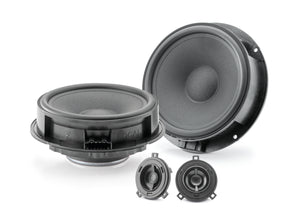About High-Resolution Audio
High-Resolution audio sources can achieve things that traditional CD and compressed audio sources cannot:
- Reproduce ultrahigh frequencies that, though inaudible to the human ear, interact with the audible frequency range and present subtle psychoacoustic effects.
- Accurately reproduce sounds evenly at varying volume levels.
(Fig.1) The vertical axis represents the Bit rate, indicating how much music detail is received per sample. While CDs can record up to 16Bits, High-Resolution audio files can be recorded at 24 to 32Bits.
The horizontal axis represents the sampling rate, which is how many times per second sound is sampled. The higher the sampling rate is, the more segments of sound are captured, bringing the recording as close to the original performance as possible.
As you can see in the chart, the highest CD sampling rate is 44.1kHz, while High-Resolution files have a sampling rate of 96kHZ/24Bit and can now be extended up to 384kHz with Full-Spec High-Resolution.
The advancement of digital recording has made it possible to convert analog waveforms (Fig.2) more accurately into digital data (Fig.3). This means it is now possible to create a digital music file that contains data that closely resembles the original analog waveform.


Consider ultrahigh frequency range playback, using the violin as an example. As you can see in Figure 4, when a violin’s sound is measured, it reveals a waveform.
(Fig.5) In addition to the fundamental 1st harmonic (the original wave), higher frequencies, found in the 2nd and 3rd harmonic, produce subtle sound characteristics of the instrument, a violin in this instance. The high frequency components of harmonics may reach a frequency range that is inaudible to the human ear, but important to maintain the original characteristic of the music.
In many cases of lower resolution audio like CDs and common streaming music, the harmonics of high frequency components are simply cut out due to their inability to capture those sounds. And while that range of sound is not necessarily within an audible range to the human ear (Fig. 6), simply eliminating those harmonics will result in less authentic sound and instrument characteristics that may stray from the original.
A High-Resolution sound source can playback these ultrahigh frequencies, and therefore accurately reproduce the original sounds from the musical instruments; specifically, sounds in the high frequency range that are more expressive and create a more delicate and rich sound. Above all, the greatest benefit of High-Resolution playback is bright, high frequency sounds reproduced with very little distortion and realistic sound characteristics.





